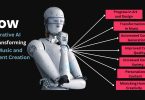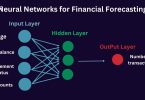Introduction to Machine Learning
Machine learning (ML) is a branch of artificial intelligence (AI) that empowers computers to learn from data and make decisions or predictions based on that learning. Unlike traditional programming, where explicit instructions are provided to the computer, machine learning algorithms detect patterns within the data and adapt their behavior accordingly. This ability to learn and improve from experience without being explicitly programmed is what makes machine learning such a powerful tool in today’s technology-driven world.
The Concept of Models and Data
At its core, machine learning relies on the concept of using data to train models. A model is essentially a mathematical representation of a process that the algorithm tries to learn. The learning process involves feeding a large amount of data into the algorithm, which then uses statistical techniques to identify patterns, relationships, or structures within the data. The ultimate goal is to develop a model that can make accurate predictions or decisions when presented with new, unseen data.
Types of Machine Learning
Machine learning can be broadly categorized into three main types: supervised learning, unsupervised learning, and reinforcement learning.
Supervised Learning
In supervised learning, the algorithm is trained on a labeled dataset, which means that each input is paired with the correct output. The model learns to map inputs to the correct outputs by minimizing the difference between its predictions and the actual outputs in the training data. This process of reducing errors is known as optimization, and it is central to the learning process in supervised learning. Common examples of supervised learning tasks include classification, where the goal is to assign inputs to predefined categories, and regression, where the goal is to predict continuous values.
Unsupervised Learning
Unsupervised learning, on the other hand, deals with unlabeled data. The algorithm must infer the underlying structure or distribution of the data without any explicit guidance on what the output should be. Clustering is a common unsupervised learning task, where the algorithm groups similar data points together based on their features. Another example is dimensionality reduction, where the algorithm reduces the number of variables under consideration, simplifying the data while retaining its essential characteristics. Unsupervised learning is particularly useful when there is little to no labeled data available or when discovering hidden patterns within data is the primary objective.
Reinforcement Learning
Reinforcement learning is a different approach where an agent learns to make decisions by interacting with an environment. The agent receives feedback in the form of rewards or penalties based on the actions it takes, and the goal is to learn a policy that maximizes cumulative rewards over time. This type of learning is inspired by behavioral psychology, where learning is driven by the consequences of actions. Reinforcement learning has been successfully applied in various domains, including robotics, game playing, and autonomous systems.
The Role of Data in Machine Learning
Data plays a critical role in machine learning. The quality and quantity of the data directly impact the performance of the model. A well-curated dataset with relevant features can significantly improve the accuracy of the model, while poor or insufficient data can lead to underfitting, where the model fails to capture the underlying trends, or overfitting, where the model becomes too specialized to the training data and performs poorly on new data. To mitigate these issues, techniques like cross-validation, regularization, and data augmentation are often used.
Feature Engineering
Feature engineering is another crucial aspect of machine learning. It involves selecting and transforming the raw data into meaningful features that can improve the model’s performance. Feature engineering requires domain knowledge and creativity, as the right set of features can make the difference between a mediocre model and an excellent one. Some common techniques include normalization, where data is scaled to a standard range; one-hot encoding, where categorical variables are converted into binary vectors; and feature selection, where irrelevant or redundant features are removed.
The Machine Learning Process
The process of building a machine learning model typically involves several stages. First, data is collected and preprocessed to ensure it is clean and suitable for analysis. This step may include handling missing values, normalizing data, and splitting the data into training and testing sets. Next, a suitable machine learning algorithm is selected based on the nature of the problem and the characteristics of the data. The model is then trained using the training data, where the algorithm iteratively adjusts its parameters to minimize the error between its predictions and the actual outcomes.
After training, the model’s performance is evaluated using the testing data, which was not seen during the training process. Various metrics are used to assess the model’s accuracy, such as precision, recall, F1 score, and mean squared error, depending on the type of task. If the model’s performance is satisfactory, it can be deployed in a real-world application. However, if the performance is subpar, the model may need to be retrained with more data, different features, or alternative algorithms.
Challenges in Machine Learning
Machine learning also faces several challenges. One major challenge is the risk of bias in the model. Since machine learning models learn from data, any biases present in the training data can be inadvertently learned and perpetuated by the model, leading to unfair or discriminatory outcomes. Ensuring fairness and transparency in machine learning is an ongoing area of research, with techniques such as bias mitigation and explainability being developed to address these concerns.
Another challenge is the interpretability of machine learning models. Complex models like deep neural networks often function as “black boxes,” making it difficult to understand how they arrive at their decisions. This lack of transparency can be problematic in high-stakes applications, such as healthcare or finance, where understanding the decision-making process is crucial. Researchers are working on methods to make machine learning models more interpretable without sacrificing accuracy.
Conclusion
Despite these challenges, machine learning has made significant strides in recent years, driven by advances in computational power, the availability of large datasets, and improvements in algorithms. Machine learning is now ubiquitous, powering a wide range of applications from personalized recommendations and image recognition to autonomous vehicles and predictive maintenance.







Leave a Comment